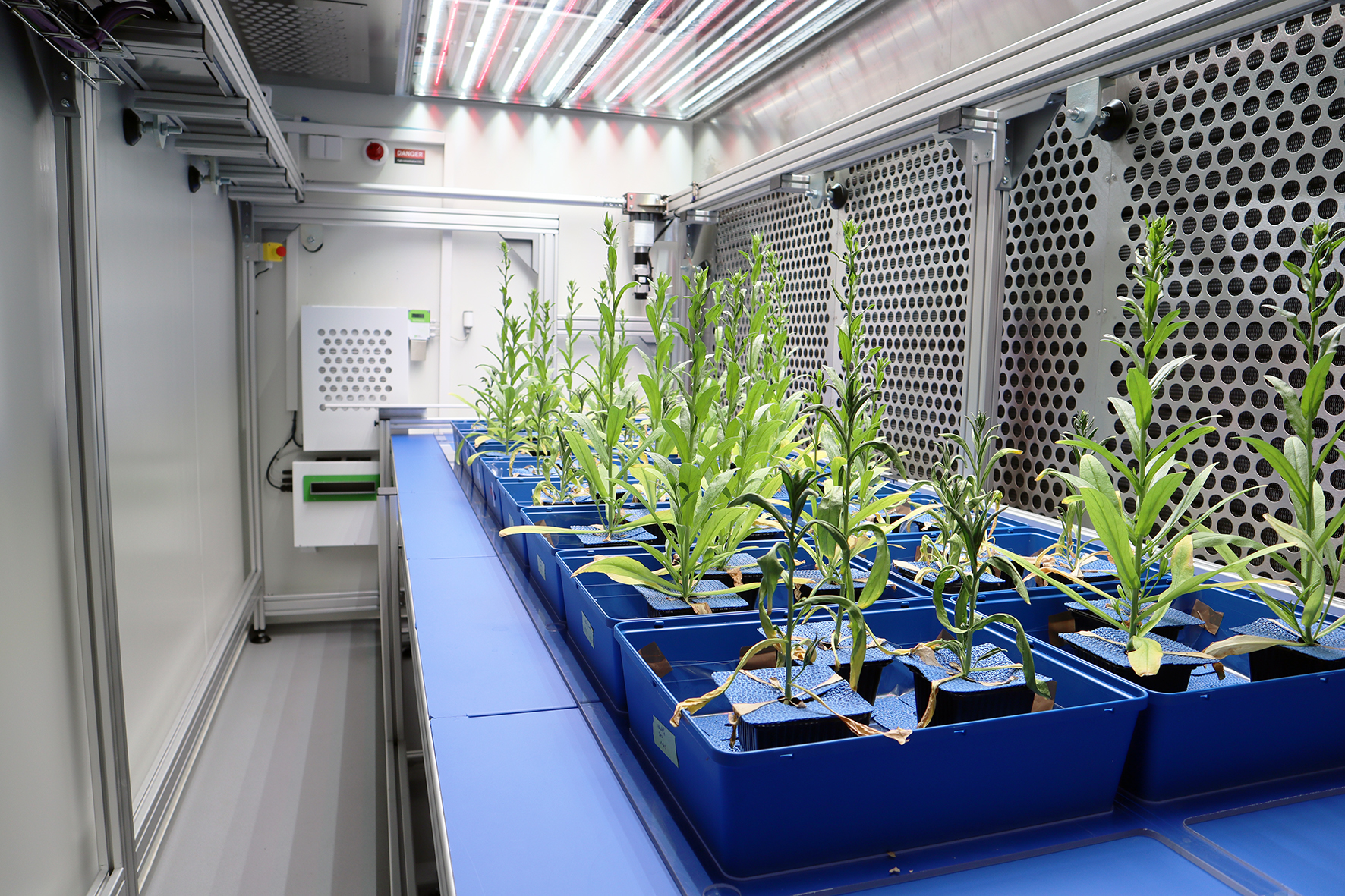Digital & non-invasive
As part of the research and innovation initiative d4agrotech of the province of Lower Austria and with the support of the funding programme "Expansion of Research and Technology Infrastructure" (IWB/EFRE), a digital key technology in the field of plant breeding has been successfully established.
Phenotype
The effect of the cultivation conditions on the plants is monitored by analysing and describing the phenotype of the plant. The phenotype represents the external appearance of a plant, which is influenced by its genetic disposition (genotype) and by interactions with external environmental factors. The new infrastructure facilitates to record a wide range of phenotype parameters in a high-throughput process using non-invasive imaging methods while simultaneously simulating a wide range of climatic conditions.
Specifications:
Each of the technically identical but separated growth capsules can be individually adjusted to the respective project requirements.
Growth capsule specifications are listened below:
Realisable environmental conditions:
- Temperature: -5°C to 40°C
- Humidity: 40 - 80% relative air humidity
- Light: Flexibly customisable LED light spectrum (up to 1,000 µmol m-2 s-1 PPFD)
- CO2: Ambient concentration to 1,500ppm
Camera modules (top view)
- RGB module: Multispectral imaging with three colours (red/green/blue) in the visible range for recording morphological parameters such as
- Leaf area index
- Relative growth rates
- Changes in leaf position
- Plant fitness (green index)
- FC/RGB module: Combination of multispectral imaging in the visible range and in the fluorescence range to record physiological parameters such as
- Chlorophyll fluorescence (dark- or light-adapted plants)
- Chlorophyll fluorescence kinetics
- Efficiency of photosynthetic performance at different stages of development
- 3D module: The plant morphology is scanned using a laser scanner and 3D images are created.
- VNIR module: Hyperspectral imaging covers the visible and near-infrared wavelength range from 380nm to 900nm. The acquired spectral reflectance profiles are used to obtain the following parameters:
- Quantification of healthy or diseased plant parts
- Detection of biochemical components
- Physiological changes in the plant
Capacities:
Each growth chamber offers space for 20 trays, resulting in capacities of up to 400 plants per chamber, depending on the pot size.






